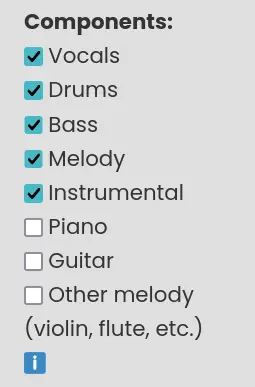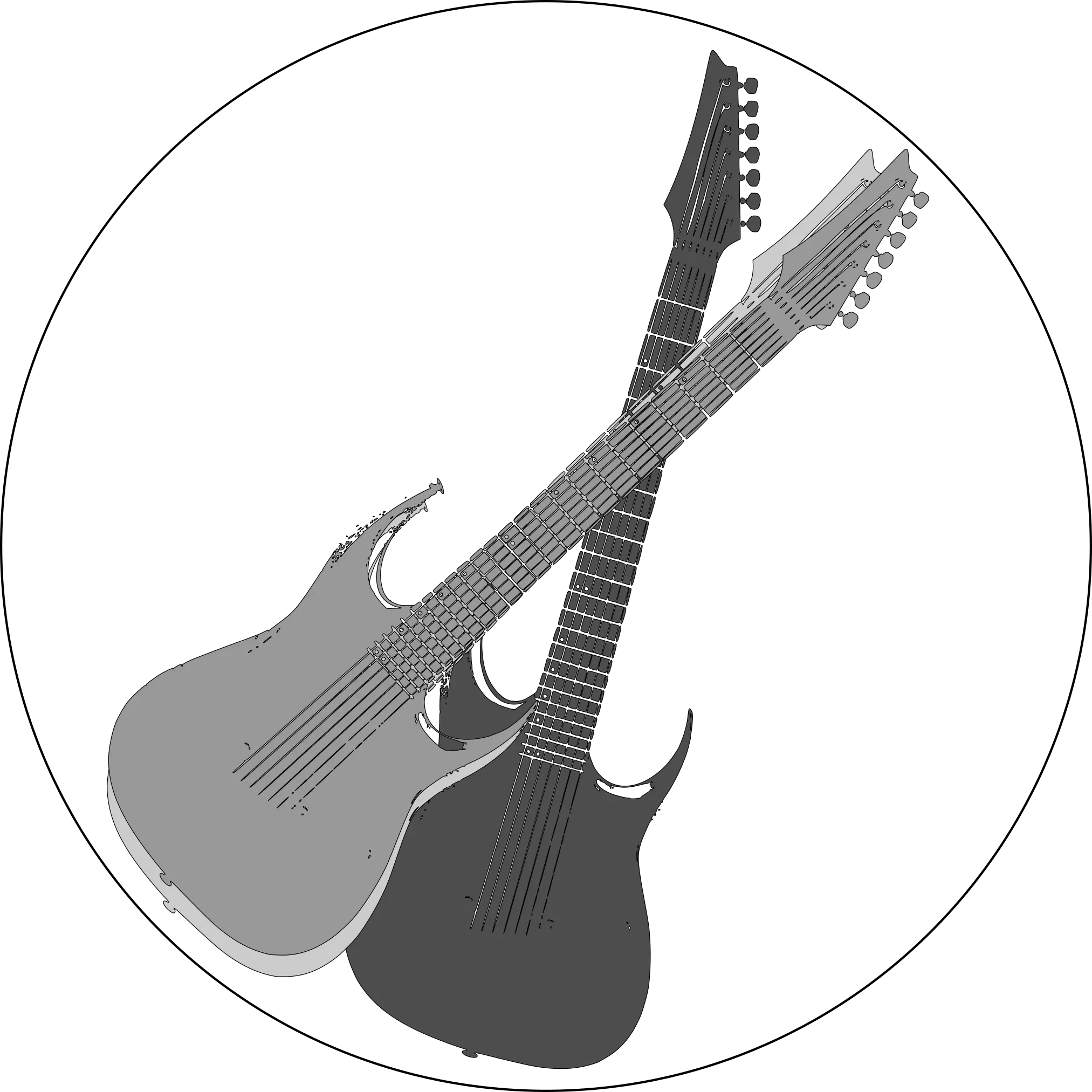Piano and guitar stems just got better!
Posted by sevagh on 23 December 2024
Category: announcements
We just made our high-quality piano and guitar stems better! Continue reading to find out how.
Separate them right now for free directly in your browser and see for yourself!

Table of contents
- Melody stems vs. piano and guitar stems
- Why is it harder to separate piano and guitar?
- What happens when you pick piano or guitar stems?
- How did we improve piano and guitar stems?
- How did we make the AI models faster?
- Conclusion
Melody stems vs. piano and guitar stems
Music Demixer, our website, is one of the few stem separation websites and tools that can separate piano and guitar stems from a song.
This is a tricky task. Typical AI models for stem separation have four stems:
- Vocals
- Drums
- Bass
- Other, also known as Accompaniment - on our website, we call it Melody
Piano and guitar are contained inside the Melody stem, but generally, piano and guitar are popular and distinct instruments that have their own role in modern music.
In the case of stem separation where piano and guitar are offered separately from the melody stem, we also provide “other melody” which contains any other melodic instruments (like violin, flute, etc.) that are not piano or guitar.
Why is it harder to separate piano and guitar?
Vocals, drums, bass, and melody can be considered to have distinct characteristics that make them easier to separate:
- Drums are primarily percussive, with sharp transients and noise-like elements that distinguish them from sustained instruments.
- Bass sits mostly in the lower frequency range, which makes it stand out from mid- and high-frequency instruments.
- Vocals have unique formant structures and a wide but identifiable pitch range, plus the human voice’s timbre is quite distinct compared to instruments.
When you get into separating piano and guitar from the rest of the melody, it’s more complex because:
-
Overlap in Frequency Ranges: Piano covers a very wide frequency range — from deep bass notes to bright treble — while guitars often sit in the midrange but can extend into higher frequencies, especially electric guitars with effects or acoustics with bright overtones.
-
Similar Harmonic Content: Both instruments can produce rich harmonics and chords. A single guitar strum or piano chord contains multiple frequencies that can overlap with each other and with other instruments in the mix.
-
Varied Playing Styles: Guitarists might use techniques like strumming, picking, palm muting, or distortion (for electric guitars), and pianists can use sustain pedals, staccato playing, or arpeggiation. These variations can blur the lines between instrument “signatures” and make it harder for AI models to distinguish them.
-
Dynamic and Tonal Variability: A piano can be played softly with a warm tone or loudly with a bright, percussive attack. Guitars have a wide array of tones — nylon strings, steel strings, electric with distortion, etc. The AI must adapt to these dynamic nuances.
Because of these factors, extracting piano and guitar separately requires more refined modeling and additional training data. Our latest improvements to Music Demixer’s AI models focus on these specific challenges, allowing our system to better pinpoint each instrument and cleanly isolate it for a more accurate, high-quality stem.
What happens when you pick piano or guitar stems?
When you pick piano or guitar or other melody in Music Demixer, we use a special AI model that is trained to separate piano, guitar, and other melody from the mixed song. If you also requested the melody stem, we combine these melodic instruments into a single melody stem to also provide you with the full melody.

How did we improve piano and guitar stems?
In short, the higher quality levels on Music Demixer use what is known as AI ensemble models. This is a technical term for “mixing different AI models together to get the best results.”
For example, since we have high-quality drum and bass separation, using those to remove drum and bass before separating piano and guitar will lead to a quality boost for piano and guitar.
Because we improved the speed of our AI model and ensemble model execution, we were able to create a new quality level for piano and guitar stems. This new quality level is available to all users, including free users.
How did we make the AI models faster?
For a single execution of the AI model, earlier this year we made it run 4x faster at a minimum, which is an astonishing improvement. We did this by leveraging cutting-edge AI acceleration technologies like ONNXRuntime.
For ensemble models where we run AI models multiple times, we made a change recently that intelligently chooses which parts of the ensemble run for any combination of user input stems.
This also means that since we have better control over the number of AI model executions per song demix, we can offer more quality levels within this “execution budget.”
Conclusion
We are constantly working to improve the quality of our stems and the speed of our website, and we are excited to bring you these improvements.
We recently compared Music Demixer to Spleeter to let our users make the best choice in stem separation tools!
